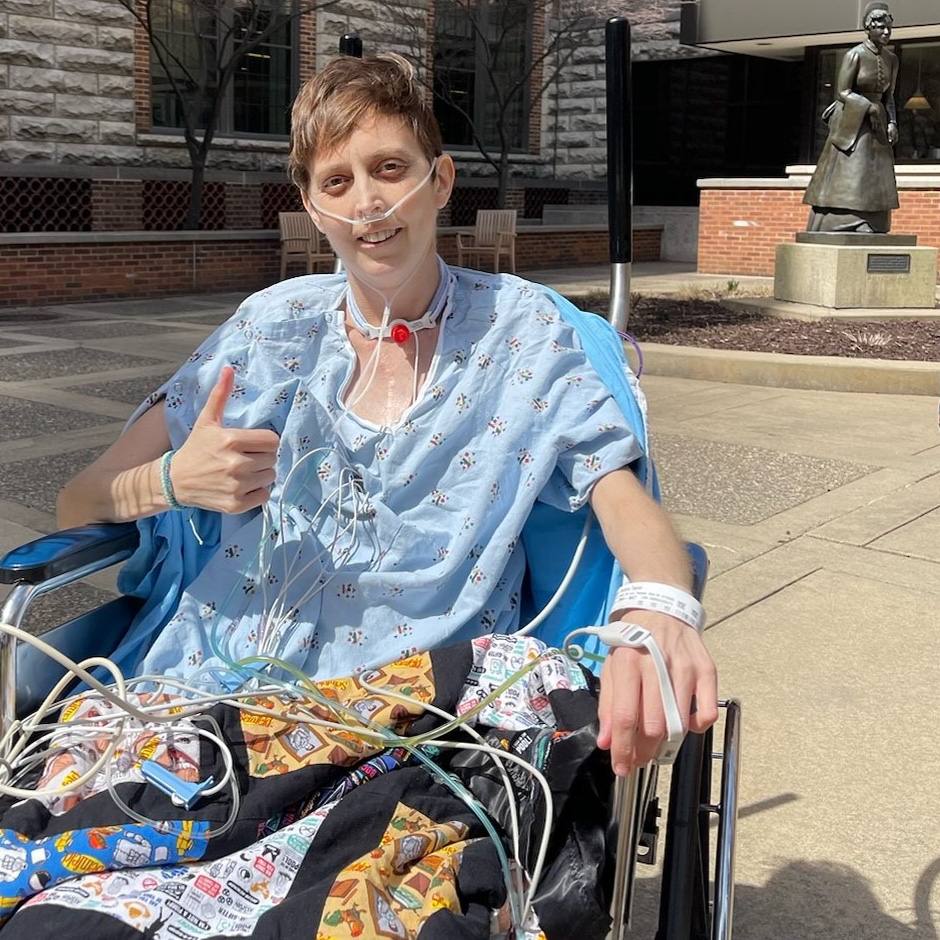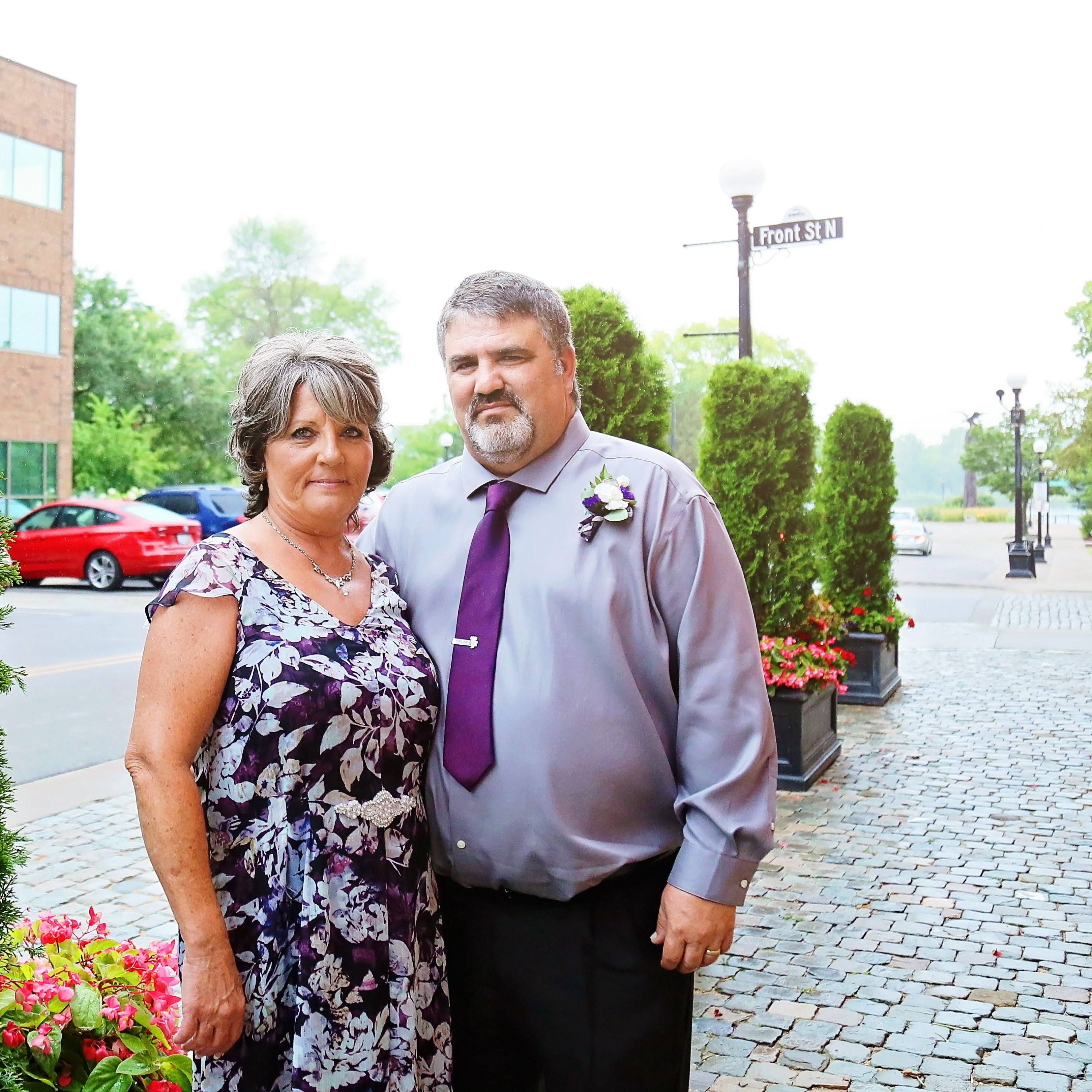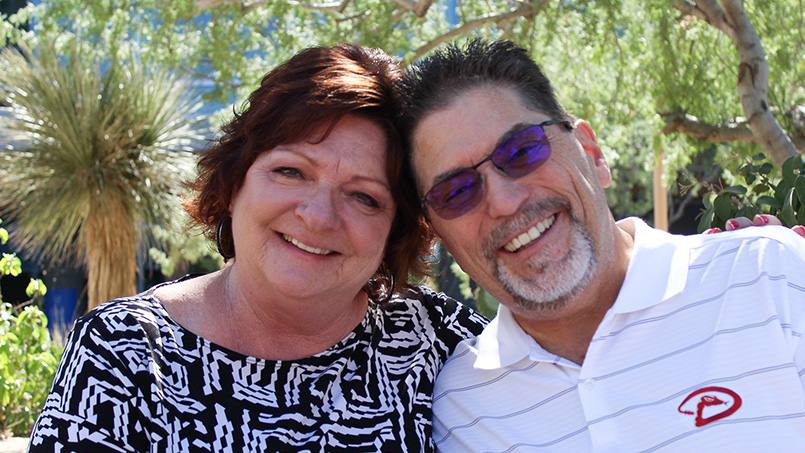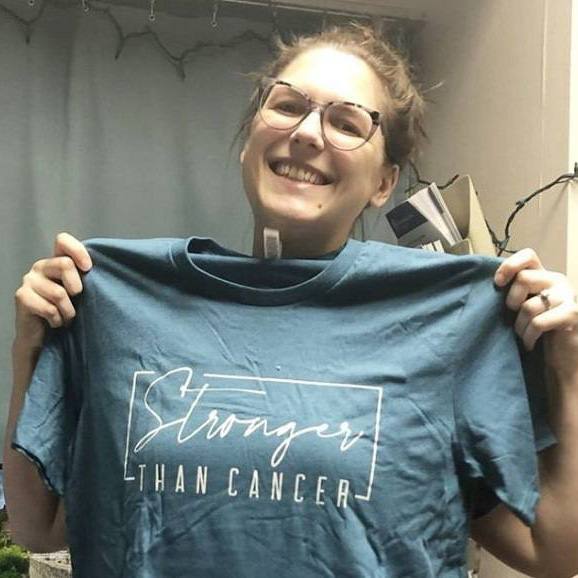Throughout Bob Washnock's journey to a heart transplant, his wife, Pam, was dedicated to being his caregiver. Pam then turned that experience into a book about caregiving in hopes of encouraging and supporting others who find themselves in that role.
In the early morning hours of Feb. 20, 2013, Bob Washnock announced to his wife, Pam, that if things didn't go well, he wanted to be cremated and his ashes spread over Mount Ripley in the Upper Peninsula of Michigan. Bob was being realistic. His chronic heart condition had escalated to the point where he required a heart transplant.
Before Bob was prepped for the transplant surgery, he and Pam hugged and cried together. Pam calmed her nerves by telling herself, "Bob is in the hands of two of the best cardiothoracic surgeons in the world." Those surgeons were Mayo Clinic's Patrick DeValeria, M.D., and Octavio Pajaro, M.D., Ph.D.
As Pam walked around Mayo Clinic's Arizona campus to clear her head during Bob's surgery, the call she had been waiting for came. "Your husband has a new heart," the message said.
When Bob was eased off the ventilator the next day, Pam was at his side. As he started to wake up and began to breathe on his own, he summarized in one simple gesture all Pam means to him. Bob motioned with his hands, "I heart you."
Steadfast love and loyalty
The love and appreciation Bob has for Pam dates back to their college days when they were both students at Michigan Technological University. After going their separate ways for a while, they reconnected. The couple married in June 1983.
"It was a love story for real," Pam says.
A test of that love began when Bob, an active water skier and snow skier with no previous signs of health issues, began having breathing problems in 1997. He was first treated with medication, but in time, his heart issues demanded the highest levels of care at Mayo Clinic. In January 2012, Bob had a left ventricle assist device, or LVAD, implanted to help pump blood throughout his body, and to preserve his heart and other vital organs while he waited for a donor heart. He was also put in an induced coma for four weeks.
During this time, a nurse suggested to Pam that she keep a journal to record Bob's journey to transplant and recount her own thoughts about being a spouse through all the highs and lows along the way. Pam discovered that by journaling, she developed a pattern where she would cry, and then she would write. It helped.
"I am just happy Bob is still here. One has to do what needs to be done to help in the recovery of your loved one." — Pam Washnock
Pam's journal chronicled the ups, downs, disappointments and triumphs of the life of a caregiver. Pam also followed advice to take care of herself by not changing her routines, and taking walks, exercising and eating right. She did all this in addition to driving the 90-minute round-trip journey from Surprise, Arizona, each day to visit the hospital, staying with Bob from 9 a.m. to 8 p.m. She came armed with his favorite pastas and other entrées.
Because Bob's stay in the hospital waiting for a transplant was so long, Pam brought shears to cut his hair in the hospital. And she insisted that he allow her to give him manicures and pedicures, which brought laughs from the nurses and physicians who walked in the room.
When asked by friends if she was OK with her demanding caregiver role, and if she felt like her own life was on hold, Pam would answer, "I am just happy Bob is still here. One has to do what needs to be done to help in the recovery of your loved one."
Unwavering care and courage
Pam's devotion was not lost on Bob.
"The caregiver goes through more than the patient," he says. "When the patient is sedated or on pain meds, the caregiver has to make all the decisions. They are the voice, eyes, legs and arms for the patient who can't do it for himself."
Bob also knows that a serious illness is rough on a relationship.
"The caregiver might feel that the patient is not engaged in the relationship, but you have to keep perspective," he says. "The patient has to be mentally strong to get well."
Since Bob's successful transplant surgery, his health has improved. Bob and Pam now live in Tucson, Arizona, and drive to Phoenix frequently for follow-up appointments and to attend sporting events. Bob's energy has returned, and he is grateful for his renewed health. His condition now is a far cry from what it was just after the surgery.
"He couldn't lift a spoon and had to learn to walk again," Pam says.
"Be courageous in your fight. Courage is not without fear. Courage is acting — fighting in the face of those fears." — Bob Washnock
Pam has turned her journal into a book, Your Heart Beats for Him: A Caregiver's Heart Transplant Journey. She wrote it to inspire and help others who may find themselves taking on a caregiver role. Bob has a chapter in the book as well, in which he offers advice about the rough journey to health.
"Be courageous in your fight," he writes. "Courage is not without fear. Courage is acting — fighting in the face of those fears."
In the book, Bob and Pam thank Mayo Clinic physicians, nurses, ICU staff and everyone on the transplant team.
"Without them, Bob would not be here today," Pam says.
They dedicate the book to the "selfless, generous, heart-wrenching decision by a family to allow their loved one's heart to be donated when life was no longer a viable option."
HELPFUL LINKS
- Read more about heart transplants.
- Learn about the Mayo Clinic Transplant Center.
- Check out tips for caregivers.
- Connect with others talking about transplants on Mayo Clinic Connect.
- Explore Mayo Clinic's Arizona campus.
- Request an appointment.
Related Articles








